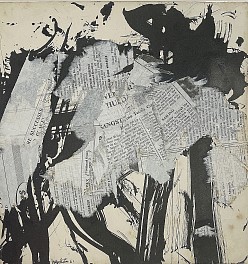BIOGRAPHY

American, 1922-2001
Artist Angelo Ippolito (1922-2001) produced a body of oils on canvas, works on paper, and assemblages renowned for their lyrical color, light, and compositional rigor. His paintings gained acclaim for their "brilliant color" (Fairfield Porter) and "joyous lyricism" (Dore Ashton), and are featured in the collections of New York's MoMA, Whitney, and Metropolitan museums.
An emigrée from Italy at age nine, Ippolito never graduated from high school, but after serving in the south Pacific in World War II took advantage of the GI Bill to study with painters Amedee Ozenfant and John Ferran in New York and with Afro in Rome.
After returning to New York he settled on 10th Street, frequenting favorite neighborhood haunts of the Abstract Expressionists such as the Artist's Club and Cedar Tavern. In 1952, Ippolito and artist Fred Mitchell identified a former storefront that was to usher in a shift in New York's artistic epicenter. With their peers Lois Dodd, Bill King, and Charles Cajori, Ippolito and Mitchell established the first of the downtown cooperative galleries, the Tanager, in a move to offer an artist-centered alternative to the commercial galleries that beckoned from 57th street. The Tanager championed artists who would later go on to fame such as Alex Katz, Tom Wesselman, Mary Abbott and Philip Pearlstein.
It was at the Tanager that Ippolito first exhibited a luminous series of canvases inspired by the landscape of his birthplace in southern Italy. Calling Ippolito's inaugural exhibition at the midtown Bertha Schaeffer Gallery "a notable event," critic Robert Rosenblum wrote that "his canvases present abstract analogies to a landscape vision, suggesting earth, horizon line and sky; yet the separate realms of land and air are most often fused together in a single coloristic unity of closely-valued hues." Over the following decade, the fusion of earth and sky in Ippolito's canvases progressed to the point where the horizon vaporized, leaving only atmosphere.
Having relinquished the solid forms of Cubism and the landscape, Ippolito was left with color alone to anchor his airy compositions. Reviewing a later exhibition at Bertha Schaeffer, fellow painter and critic Fairfield Porter wrote, "Ippolito is one of a few Non-Objective artists who uses brilliant color as his material instead of something to dress the painting up with."
Art historian Kenneth Lindsay wrote "he plays out his life like a good jazz musician who 'feels' the right point of entry and improvises a chorus within acknowledged limits of form." Lindsay further noted the connection between Ippolito's travels across Europe and America and the stylistic variations in his artworks: "This is his timing....in a curious way, the 'beat' of his change of environment also describes the way he paints."
